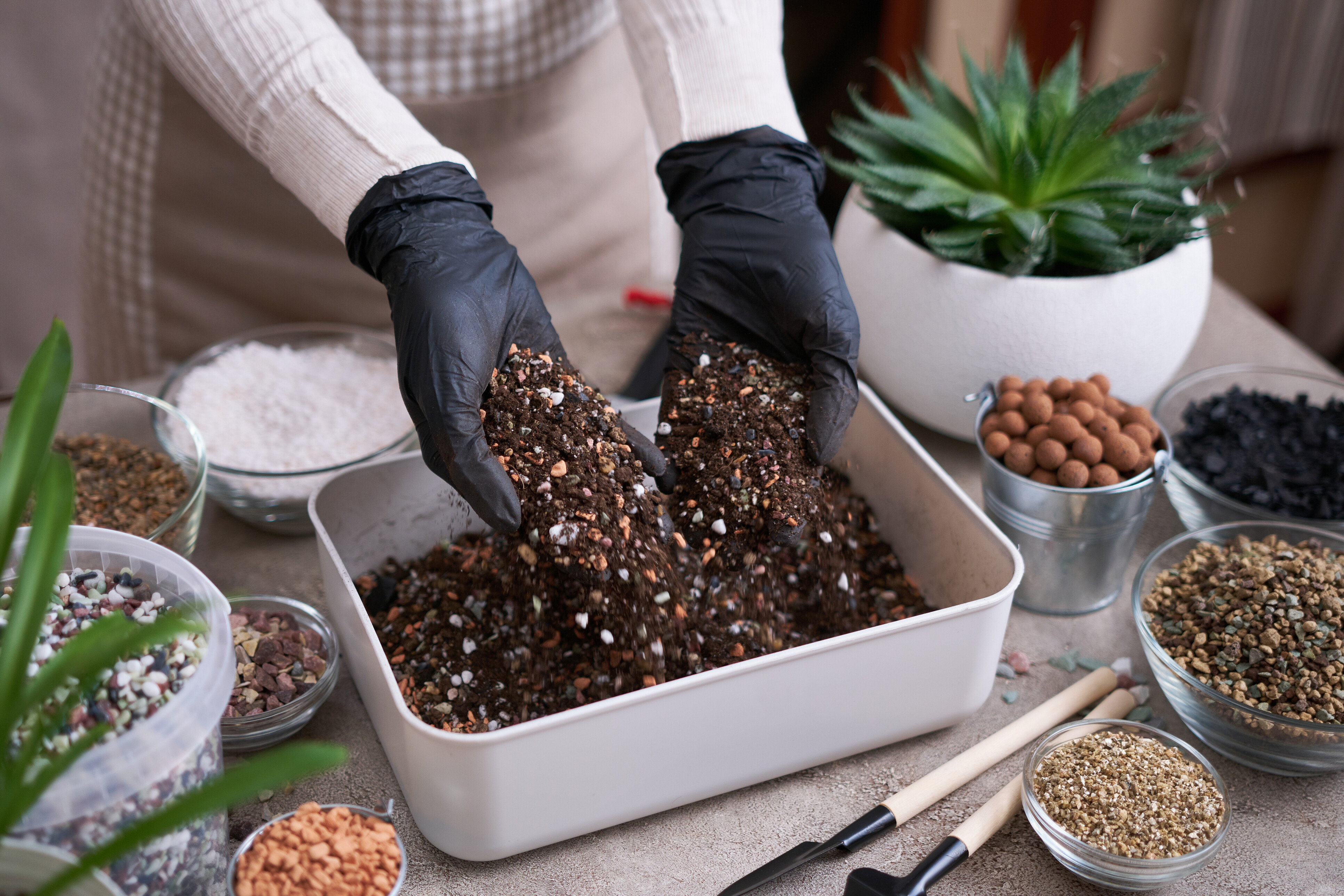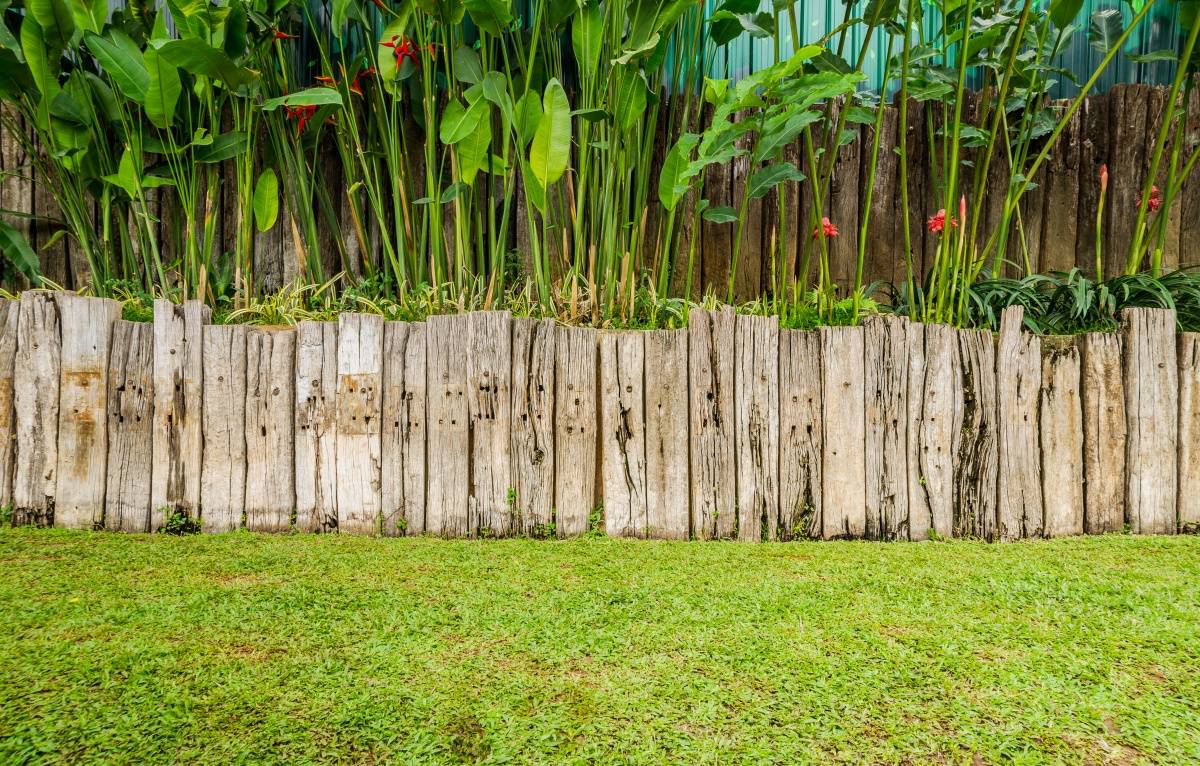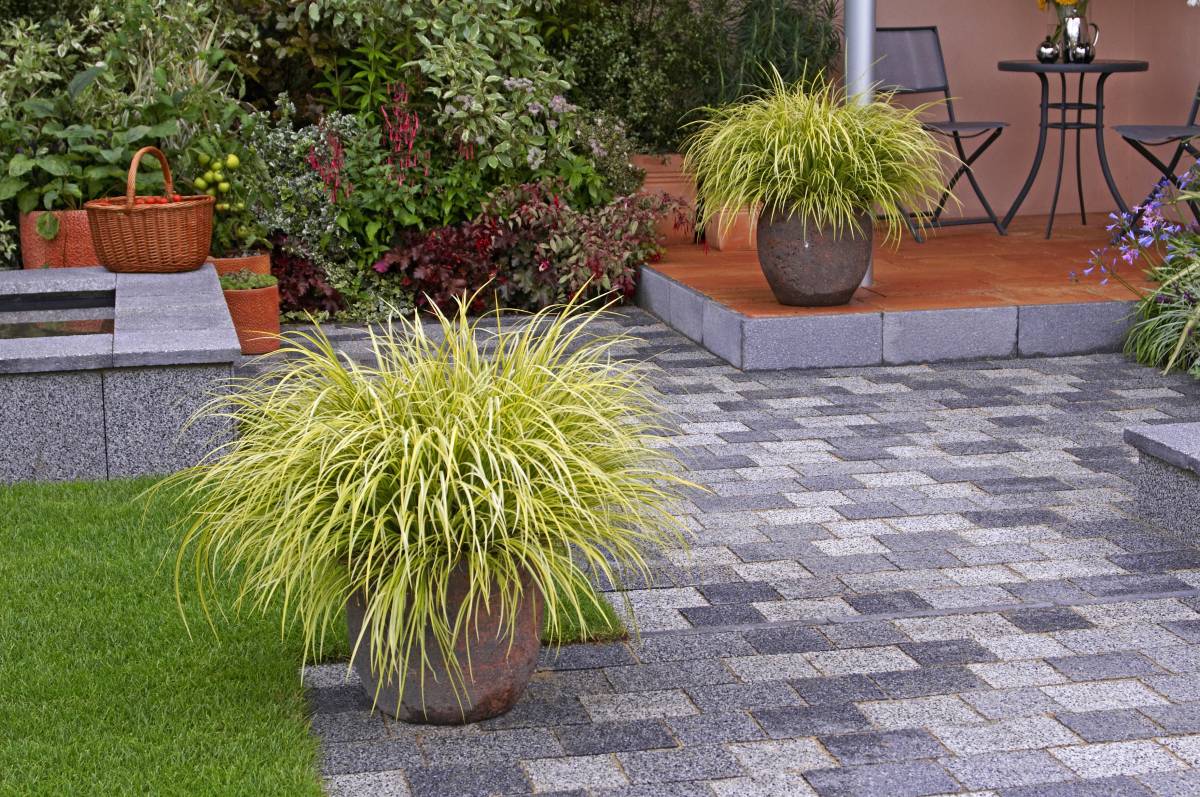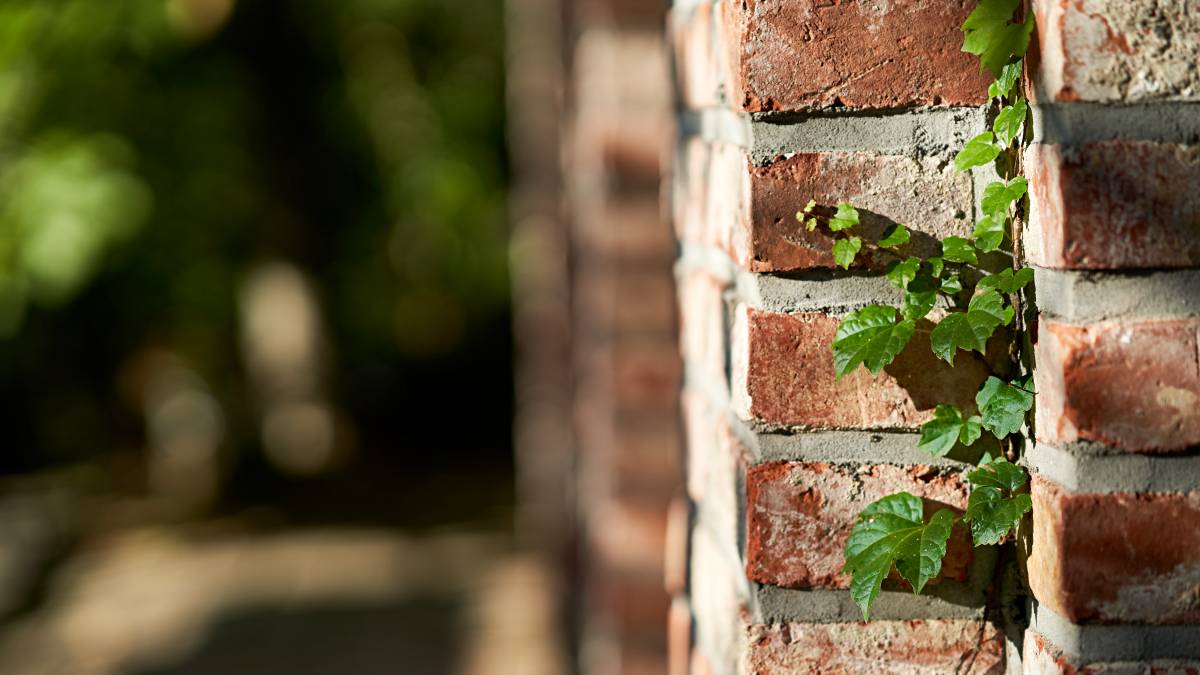- Home/
- Guides/
- Garden Designers/
- Garden Path Ideas

27 Garden path ideas you’ll surely love
Find inspiration in these functional and beautiful garden paths.
Find a garden designerLast Updated on
A functional garden path serves as more than just a walkway through your garden; it can also act as a stunning architectural element, adding visual appeal to your outdoor space.
A well-designed garden path can also make gardening tasks such as harvesting, pruning, and weeding easier and more efficient while protecting plants and grass from being stepped on.
In this guide, we’ll introduce you to the various types of garden paths you can build in your own garden, as well as provide tips on creating a garden path that meets your specific needs and preferences.
Cheap DIY garden path ideas
Want to save money and do it yourself? Here are inexpensive garden paving ideas you can do. Gather a bucket, drywall saw, garden rake, spade, wheelbarrow, tamper, and garden trowel. Here are ideas on what cheap DIY garden paths you can build, as well as tips on how to build them.
1. Mulch walkways

Mulch is a less expensive option compared to gravel and stone pebbles. Common types of mulch you can use for your garden paths include wood chips, cocoa beans, and cypress bark. These materials are lighter than stone, therefore, easier to haul and spread.
However, keep in mind that organic paths decompose over time. You will need to change them every two to five years. Plus, you cannot use them for paths in areas with poor drainage if you don’t want your path to be soggy. It’s also necessary to rejuvenate them every two to five years with new material.
2. Gravel walkways
Gravel materials are available in various types: crushed gravel, crushed limestone, and pea rock. For a path more formal or longer lasting than a mulch path, you can use washed gravel, crushed stone, or crushed shells. Gravel materials last long and will only need occasional weeding as maintenance.
3. DIY brick garden path

For a timeless, classic garden path, brick is a favourite choice. They are durable, sleek, and long-lasting. Plus, they can be arranged in blocks! You can install them in squares, crosswise, and zigzags. If you want to match the colour of your bricks to their surroundings, you can paint them in any colour.
4. Wooden “biscuits”
These ‘biscuit’-looking steps are made from trunks and arranged to form a rustic-looking but sturdy walkway.
5. Grass walkway
 Love walking bare feet and feeling the grass brush your feet as you step on them? If you have lush garden areas with less foot traffic, you can opt to have a grass walkway! It’s not as labour-intensive as well. However, you may need to factor in the necessary maintenance it entails, such as regular cutting, edging, and watering.
Love walking bare feet and feeling the grass brush your feet as you step on them? If you have lush garden areas with less foot traffic, you can opt to have a grass walkway! It’s not as labour-intensive as well. However, you may need to factor in the necessary maintenance it entails, such as regular cutting, edging, and watering.
6. Rustic wooden walkway
Want to use refurbished wood? Use your refurbished pallet wood to line your garden’s straight path to achieve a rustic-looking walkway.
DIY walkways can take lots of time and effort. It can also be challenging if you don’t have prior experience in garden design. You can hire a garden designer to take the work off your hands and ensure you achieve a beautiful garden path. |
Modern garden path ideas
7. Scandinavian-inspired, minimalist circle stones
 Put some rhythm in your garden by installing minimalist round-shaped stones in similar or alternating sizes. This looks nice with the varying plants along the edge of the walkway.
Put some rhythm in your garden by installing minimalist round-shaped stones in similar or alternating sizes. This looks nice with the varying plants along the edge of the walkway.
8. Stone and wood path
Combine wood and stone for a unique look on your garden path. You can use rustic wood or clean-cut ones over a bed of pebbles or other kinds of stone.
9. Minimalist wood decking

Deck your walkway with wooden steps for a clean, minimalist aesthetic.
10. White marble walkway on gravel
Do you have gravel flooring and want to build steps for ease of walking? Install white marble steps! The white colour of the marble looks good in contrast to the grey colour of the gravel.
11. Round concrete stepping stones

Do you have a sloping garden, or just want to add layers? Add levels you can step on by installing big round concrete stepping stones like these.
12. Clean, black modern slabs
Black slabs can make a pathway look sleek and elegant. Pair it with lighter-coloured beddings such as gravel or white pebbles.
13. Circular stones on red gravel

Red and black add pops of colour to your garden, which is most likely composed of different shades of greens. Use circular stones on red gravel like the ones in this garden path.
14. Clean wooden plank arrangement
Complement your pruned and shaped bushes by creating a walkway lined with wooden planks. Imagine walking on this under the morning sunshine!
Creative garden path ideas
15. Stone mosaic garden path

Want to see beautiful patterns on your garden steps? Create walkways with breathtaking spiral patterns.
16. Colourful ceramic walkway
Express your colourful personality by using colourful ceramic tiles to line your walkway. It’s not just functional as a garden path but is also a decorative element in your garden!
17. Geometric garden path

Garden paths don’t always have to be straight lines or circles. If you’re looking for a unique design, a geometric garden walkway is an excellent choice.
18. Stepping-stone paths with yard stones
If you prefer building a path that involves very little digging, use stepping stones. They’re one of the easiest materials to work with, even if the stone is heavy. Since there is a distance between each stepping stone, you don’t have to level them with one another.
19. Planted paths with yard stones

Ground cover plants in between your yard stones make the walkway easier to walk on. For one, you can skip the thick, compacted gravel base underneath. So even if the stones shift and become uneven, the plants will hide that. Secondly, you don’t need to put in extra effort (and time) to lay the stones perfectly.
Planted path building tips:
Foot-traffic resilient plants. Choose plants that are strong enough to stand foot traffic and can grow in your garden’s lighting and soil conditions.
Regular watering. Water the new plants regularly for the first few months to help them thrive.
Manage weeds. Pull weeds and grass regularly to prevent them from overrunning the plants.
20. Cobblestone garden path
Want to mimic traditional European gardens? Get the rustic vibe that a cobblestone garden path brings. This is perfect for gardeners who have tall wildflowers overspilling onto the path.
Japanese garden path ideas
Stone, plants, and water are the three essential elements of a Japanese garden. These elements are also factored in building garden footpaths, which lead a person towards a particular point. Achieve the zen garden vibe in your own home with these Japanese-inspired garden footpath ideas.
21. Garden path with water feature

Japanese gardens usually have a water feature as it symbolises renewal, calm, wonder and continuity. Some gardens have koi ponds on the side of their walkway, while others have a sōzu. A sōzu is a type of water fountain that consists of a segmented tube (commonly bamboo) pivoted to one side of its balance point. At rest, its heavier end is down and rests against a rock.
22. Bamboo garden path
Bamboo is an essential design element in Japanese Gardens and Zen Gardens. Commonly serving as an accent plant or a privacy screen, it can also give the serenity of flora with a calming rustling of leaves.
23. Walkway lined with stone lanterns

There are many kinds of stone lanterns in Japanese gardens, each corresponding to a symbolism or a function.
Garden path decoration ideas
24. Outdoor lighting for a dramatic effect

If your garden path layout is curved, add outdoor lighting for a dramatic effect! It also enhances safety when walking during the night since curved garden paths are safer when steps are well-lit.
25. Painted motif on stone
Paint flowers or any motif on your stone path or tiles to add uniqueness to your garden pathway. You can paint nature-themed, contemporary-themed, and culture-themed motifs…the possibilities are endless!
26. Garden path with water feature

Achieve a serene atmosphere by adding a water feature to your garden path. Then, lay concrete garden path pavers you can step on to navigate your outdoor space.
27. Garden path with an arch to draw the eyes
Imagine walking with a beautiful end (or milestone!) in sight – that’s how it feels to walk on a garden path that leads to an arch. Add this traditional touch to your own English country garden.
How do you lay a simple garden path?
Depending on your preferred material, here are tips and steps on how you can lay simple garden paths.
Materials for border and edging mulch and gravel walkways:
Plastic landscape edging - Cheap, fast, and easy to install
Steel or aluminium edging - For crisp edges
Brick and stone - Aesthetically pleasing but more expensive
Concrete - Less expensive than brick and stone but has the same advantage
Landscape timbers - Useful for building shallow steps on gradually sloping terrain
Mulch and gravel walkways building tips:
Cutting sod. To make the job faster and easier for long paths, you can remove grass using a gas-powered sod cutter, which can be rented. If you have a short path, you can just use a garden spade to cut off the sod.
Edging. To keep about an inch above the fill material, don’t forget to set the edging. When setting the edging or border, you can use a spacer stick to cut to the width of the garden path. This way, you can ensure that both edges run parallel to each other without having to use the tape measure. You can also hire a garden edging service to do this task for you.
Prevent sogginess. You can prevent the fill material from mixing with the soil, and plastic isn’t your only option. Plastic tends to catch water and make a garden path soggy. As a solution, cover the soil with landscape fabric instead.
Levelling the ground. Do you want the path firm enough to roll a wheelbarrow on? Use crushed stone and tamp it out after levelling. Hand tampers are okay for short paths, but you may need to rent a vibrating plate tamper for long paths.
How do you draw a slope on a garden path?
Plan the route. Keep in mind that a straight walkway down a steep slope is not safe as these may cause slipping accidents and injuries. If you want to create a straight pathway, carefully plan the route. But your safest option is to include back-and-forth zigzags.
Prepare the area. Pull out the weeds and put weed barriers in place.
Level the garden path. Use a shovel or a machine to make the ground as flat as possible.
Dig up your slope. Once the desired depth is achieved, use the shovel to level the path.
Make your curved garden path. Lay the walkway surface using your preferred material. Install the garden steps and the railings.
Bring your garden path vision to life
We hope this list of garden path ideas has inspired you to consider adding one to your own garden. If you need help bringing your dream garden path to life, you can hire a professional garden designer.
Building a garden path can add function and beauty to your outdoor space regardless of your chosen route. So why wait? Start planning and building your dream garden path today!
FAQs on garden paths
The cheapest way to lay a garden path is to use inexpensive materials such as mulch and gravel. You can also DIY mulch garden paths, so you can save on labour costs.
Grab a stiff brush to clean paved paths. If the layer of dirt doesn’t go away, you can use a pressure washer. This can help blast dirt, stains, and moss on your garden path or patio. But you do need to be careful, as pressure washers can damage concrete. Your safest bet is to hire a professional. Post a task on Airtasker to find trusted pressure cleaning services near you.
Find garden designers, fast
Find a garden designer
Related articles

36 Quirky plant pot ideas you’ll love
Read more

How to clean garden rocks
Read more

18 Garden canopy ideas you’ll love
Read more

Gardening tips for beginners
Read more

Your garden maintenance checklist
Read more

How to prune roses the right way
Read more

Learn how to repot an orchid
Read more

How to build garden steps
Read more

How to trim bushes the right way
Read more

13 best spring gardening tips
Read more

25 ways to make money gardening
Read more
Related price guides

How much does weeding cost?
Read more

How much does a gardener cost?
Read more

How much does mulch cost?
Read more

How much does garden clearance cost?
Read more

How much does hedge removal cost?
Read more

How much does a garden room cost?
Read more



















































